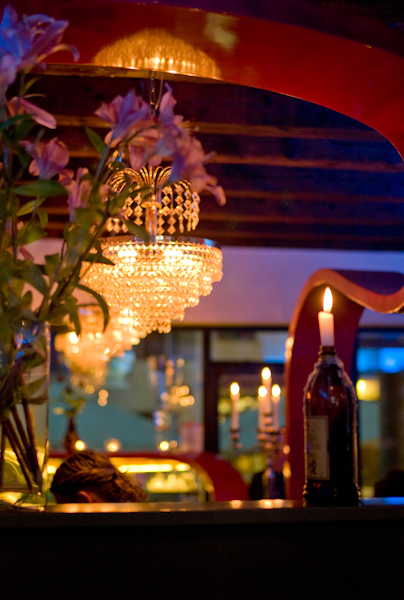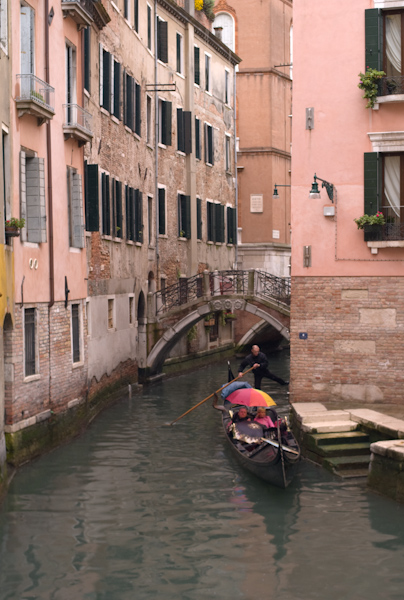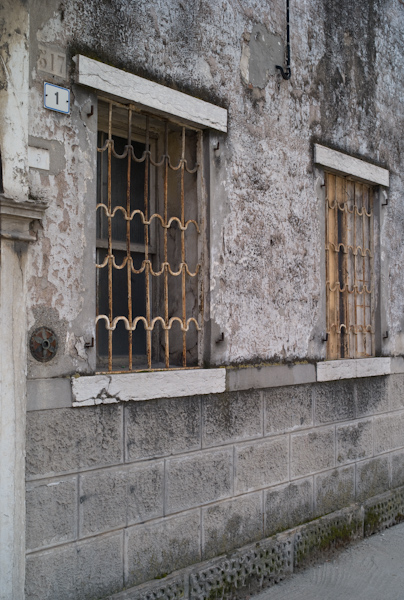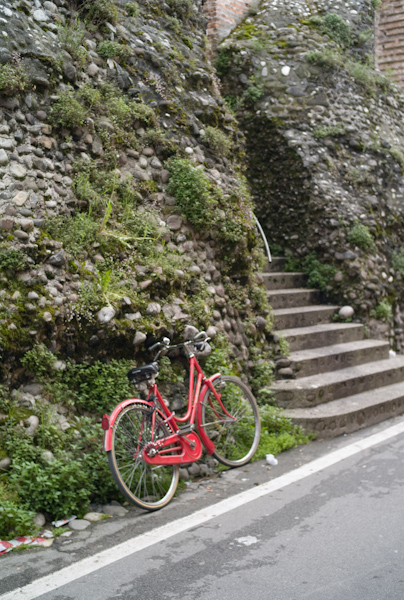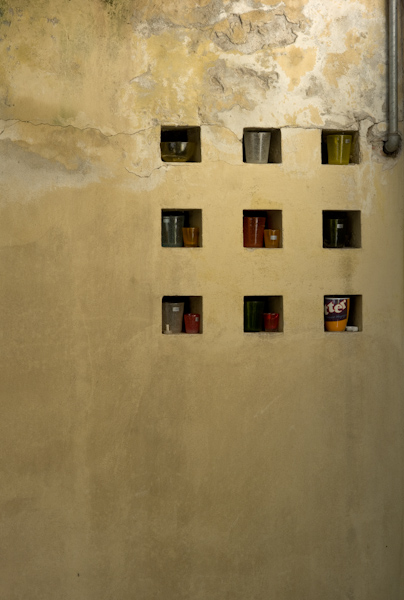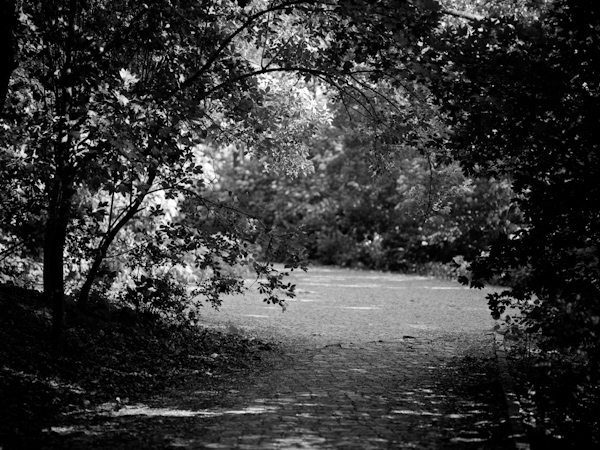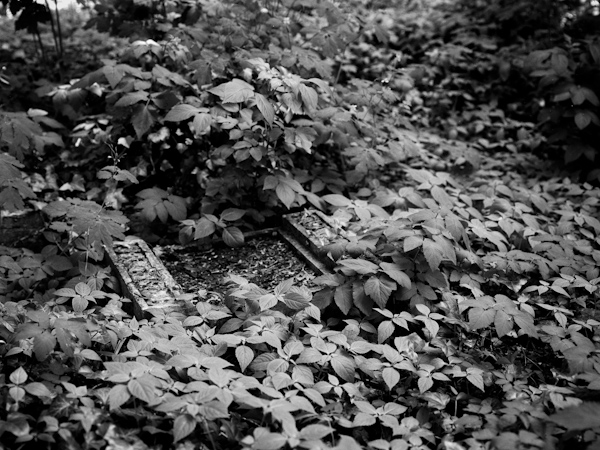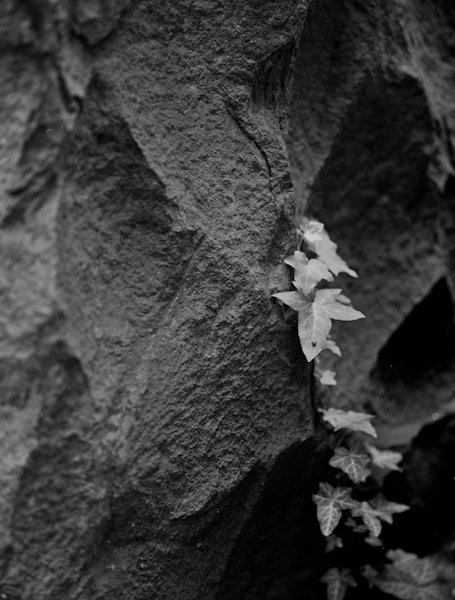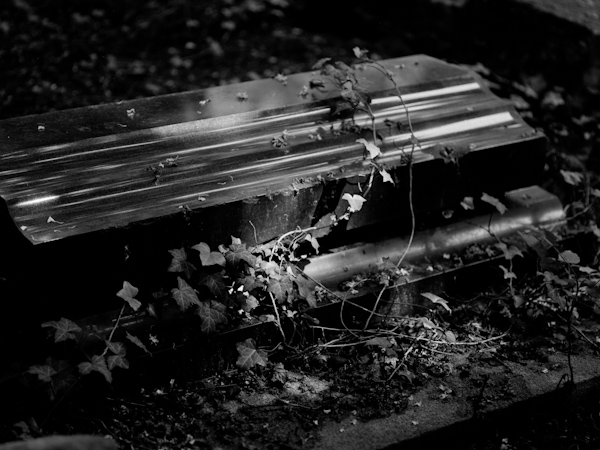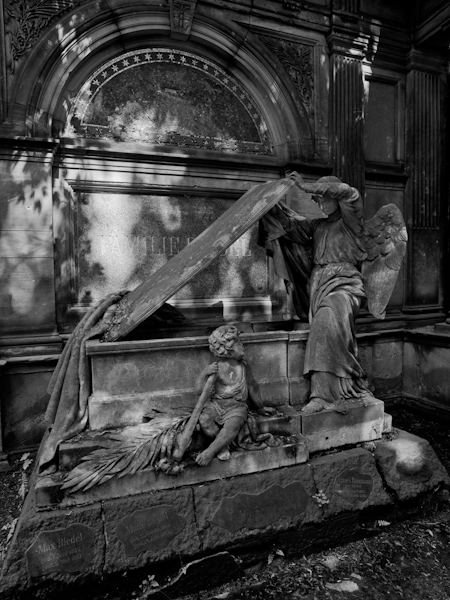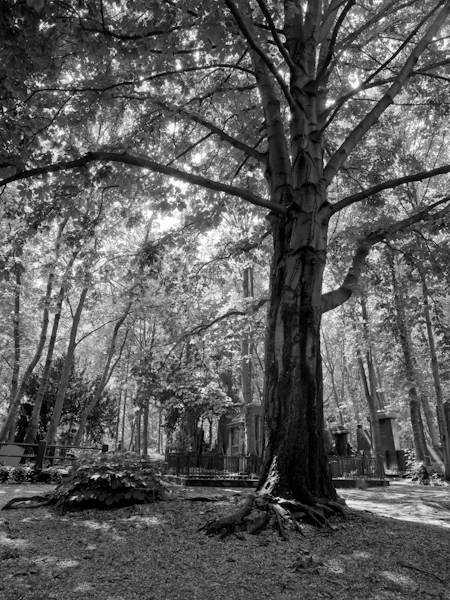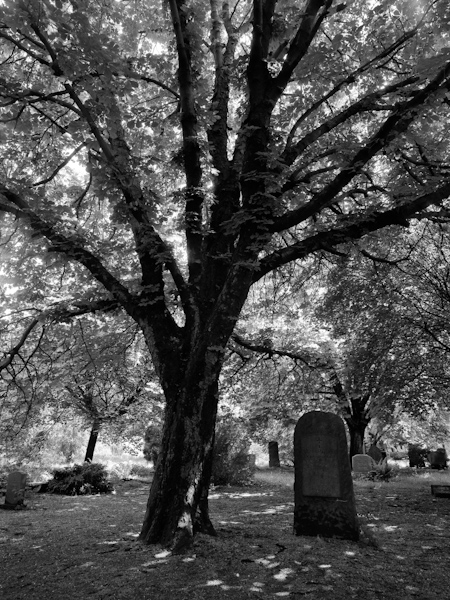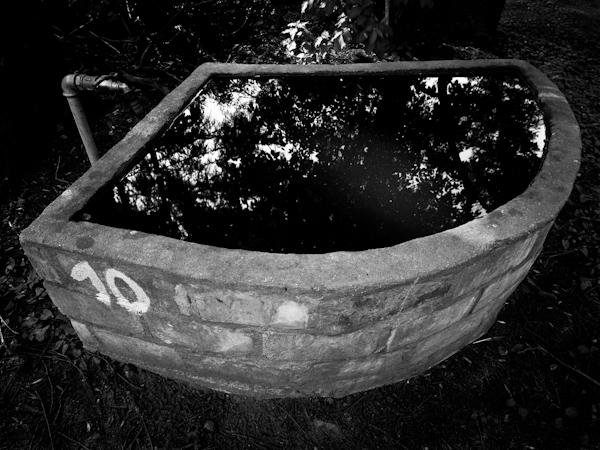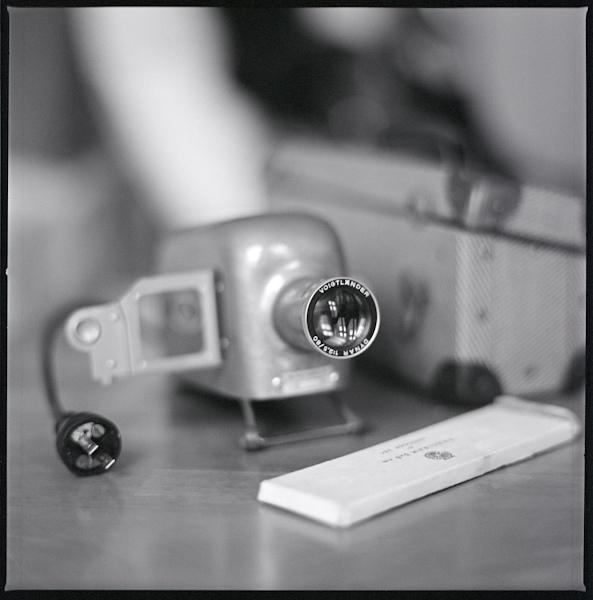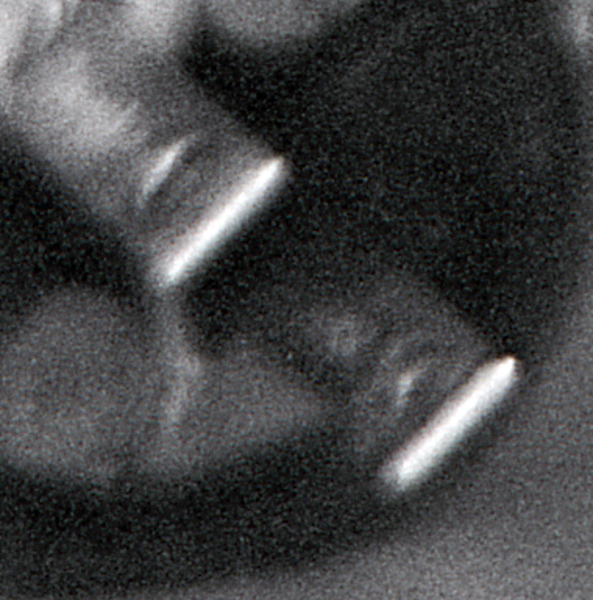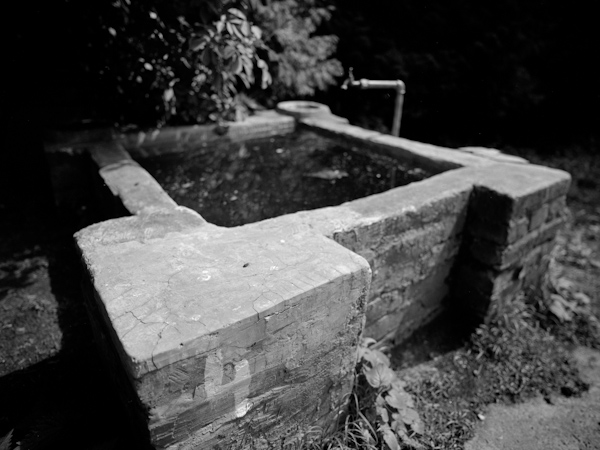Scanning - 6 June 2009 - 2
[
prev |
next ]
I have wanted to write a few words on my current workflow, and the time has come.
I am no expert on any of these matters, but have a little experience everywhere, enough to produce decent results, although probably not optimal ones.
Shooting
At the moment, I sometimes go out with my Hasselblad 2000FC/M with the 110mm f/2 FE, more often with the Leica M6 with the 50mm Dual-Range Summicron, but I do most of my serious work with the Contax 645 AF with either 35mm f/3.5 or 120mm f/4 Macro. I use the original hoods on all these lenses, as several of them are flare-prone. I use a Manfrotto 055C tripod (which I badly want to exchange for a Gitzo 3- or 5-series tripod) with a Really Right Stuff BH-55 ballhead with a quick-release lever. I also use an Acratech Leveling Base for convenience. I use the 2s delay (I might switch to 10s), which automatically invokes mirror lockup first. I meter with the built-in meter set to spot metering, and point the camera around the scene a bit until I have a feel for the range of values, before choosing my exposure. A bit informal, but so far it has worked okay for me. I would like to pick up a handheld spotmeter at some point and do more in the Zone System direction, but haven't gotten to that yet.
I am currently experimenting with various films, and have or have tried Tri-X, T-MAX 400, HP5, Adox CHS 25 (known as Efke 25 in some countries), Adox CHS 50, and perhaps one or two others, like Fuji Acros and the new Kodak Ektar (colour, the horror). My goal is to pick two or three favorites for various conditions, and get really good with these films. At the moment I lean towards Tri-X for the Hasselblad and Leica M6, and Adox CHS 25 with the Contax, but I need something in between for when Tri-X is too gritty but ISO 25 too slow. Perhaps T-MAX 100, possibly pushed to 200, or something like that.
Anyway, the shots in this blog have so far all been taken with the Contax with Adox CHS 25, a very fine-grained film. In fact, I can barely see the grain in 2400 dpi (25 MP) scans on an Epson V750!
Loading the Development Tank
When I have two identical and identically exposed films (and can find the time), I develop. First I have to get the films off the rolls and into my Paterson System 4 2-120 roll tank, and for this I use a dark bag, a contraption with two elasticized holes for my arms, and a double-zippered end to get stuff in and out. I pack in a pair of scissors, the film, a film reel, the tank, its tube and its funnel, the last three bits still assembled to save space in the bag. I remove the tape on the film before putting it back in a black film cannister, making sure that the film doesn't unroll and expose the sides as I do this.
In the bag I remove the film from the cannister, push the cannister into the corner out of the way, and hold the film. I slowly unroll some of the paper, until I get to where the film starts. I rip off as much paper as I can, to make it less fiddly to start getting the film onto the tank reel. Then I thread the film onto the reel, and "walk" it along, holding the reel between my two hands with the film coming up into the reel at the front. This way I can let the film slide between the ring fingers and the little fingers on both hands, taking care not to smudge the film with my fingers, and can thus feel when the end is nigh. Once I have most of the film on the reel, I search for the spot where the film is taped onto the paper backing, and carefully cut the film off there, as close as I can without leaving any tape on the film.
Once all this is done, I carefully push paper bits, the remaining film roll, and scissors to the side, and open the development tank, putting the reel on the tube, back into the tank, and funnel back in.
At this point the tank is light-tight, and I remove everything from the bag. I repeat all this for the second film, with a second reel. The first one is safely in the tank, and I now add the second one.
Development
I am also trying different developers, but stick to water stop bath, Tetenal Superfix Plus fixer, and Tetenal Mirasol 2000 antistatic. I have so far just tried D-76 with Tri-X, and Agfa Rodinal with Adox CHS 25. I also have Adox ATM 49 and X-Tol on hand, and will try some others, like Diafine, which is meant to scan well with Adox CHS 25. So far I like the results I have gotten with the two combinations I have tried. I chose these two combinations as my first two based on a lot of reading and thinking about my preferences, so it is quite possible that these will be my final choices as well.
I don't have any fancy equipment, just a bunch of 1-liter measuring cups (hence the 2-120 film development tank, since each 120 film needs 500 ml of solution). I fill my kitchen sink with water at slightly warmer than the correct temperature of 20 degrees Celsius, place the pre-measured developer, fixer, and Mirasol 2000 measuring cups in the water, and stick a thermometer in the developer. Once the right temperature is reached, I start. Note that all solutions are pre-mixed and already at room temperature, so they all cool down together. The developer is most temperature critical, but with most B&W films, there is a tolerance of a couple of degrees. With colour films, you would need a Jobo development machine or some other way of controlling the temperature tightly.
For Adox CHS 25 shot at 25, I use 1:100 Rodinal and develop for 16-17 minutes, turning the tank twice gently every minute, and then knocking it on the table to loosen any bubbles. The less air there is in the tank, the easier it is not to get bubbles in the liquid, so I use the 2-roll tank and always develop 2 films. For 35mm film I either develop 3 at a time in this tank, or switch to my smaller tank which holds 2 35mm films at a time, each taking 300 ml per film. I prefer the larger tank, since I then always have to mix about 1 l of each solution.
Once the developer is done, out it goes, and water in. I turn this continuously for 3 minutes, changing the water once. Then I pour the 1:9 fixer in and turn continuously for 4 minutes or a little longer. These times are all the recommended values. I then wash the film many times with fresh water. I really should leave it in the sink with water running through it for 10 minutes, but I haven't done that yet. Now that I am getting good results, I feel that it is important to tighten up the procedure to get the most out of it.
Finally, I take the films out, pour 500 ml 1:400 Mirasol in the tank, and dunk the films one at a time a few times, for a total of a bit more than 30s. Then I hang them up to dry with Jobo "vampire" film clamps. I use a trouser hanger which I hang over the edge of the inside of my shower stall, which I know is not dusty! I close the shower, and wait for a few hours. The films feel dry to the touch much earlier than that, but it takes time for all the liquid to leave.
When dry, I cut the film into 4 3-negative strips for 6×6 cm and 4 4-negative strips for 645, and insert them into protective plastic sleeves.
Scanning
So far, I have been scanning the negatives with my Epson V750, using the standard film holders and Epson Scan. I find Silvertech wildly confusing, and it is meant to be better for colour film, with Epson Scan handling B&W just as well. I do a pre-scan, select all negatives at once, leaving some extra room for trimming and possible slight rotation, although I try to lay the negatives straight in the film holder, since rotation loses resolution.
For each negative, I open the dynamic range tool (DMax?) and run it over the image, seeing how large and small the values get. Then I open the histogram tool, and tune the black point and white point to be slightly wider than the darkest and brightest values I want to retain. For some reason, the white point output range is normally set to 200, but I set the black point output to 10 and the white point output to 245, leaving 10 unused by my desired data at each end. This lets slightly darker and brighter regions also be handled, with only the real outliers being pure black or white. I double-check my work with the DMax tool, and close the histogram.
I use a scanning resolution of 2400 dpi. I don't believe that this scanner is capable of extracting more information from the negatives, even though higher resolutions are available. I tried 6400 dpi and confirmed that I was not seeing more information. I might try 4800 dpi, but to be honest, 2400 dpi yields a 25 MP image, roughly, which is more than enough for my needs, and they do take up a lot of space on disk. I scan in 16-bit greyscale mode, which yields slightly smaller (and more optimal!) files than 8-bit colour.
I make sure that the scanning mode is set to film+holder, choose B&W film, and scan. I use a naming system of camera-lens-film-frame, for example C645-35-a25-00004.tif.
I recently bought two Newton Ring resistant glass pieces, and want to try scanning directly on the glass plate. I think I might get slightly better results this way, since I see that the holder doesn't completely deal with film curl. This glass is expensive, so I just bought two, for scanning two negatives at a time. The glass is slightly wider than 6x6 cm, so I couldn't do 3 or 4 at a time anyway, but I might buy another 2 pieces so that I can work on 2 strips at a time. This breaks the automatic naming sequence of the scanning software, however, so I might also not do this.
Finally, I import the results into Lightroom 2, do any final processing there, and export for printing, putting on the web, emailing, and so on. Final processing typically involves slight sharpening, and a slight contrast boost, possibly with a slightly raised black point, since I was scanning the negatives a little on the flat side.
And that is all.
I will correct mistakes and errors in this post, so don't expect it to remain static. When I get the bugs hammered out of the process, I will turn it into an article, and refer to that article from here.
I am open to comments, criticism, suggestions and anything else.
